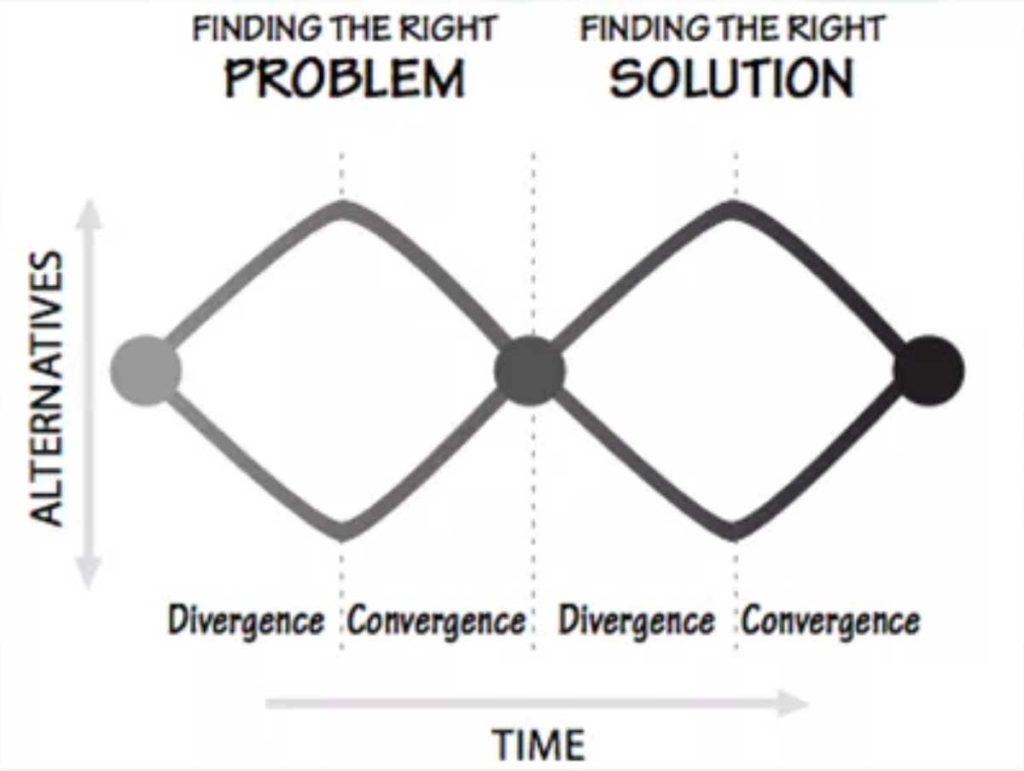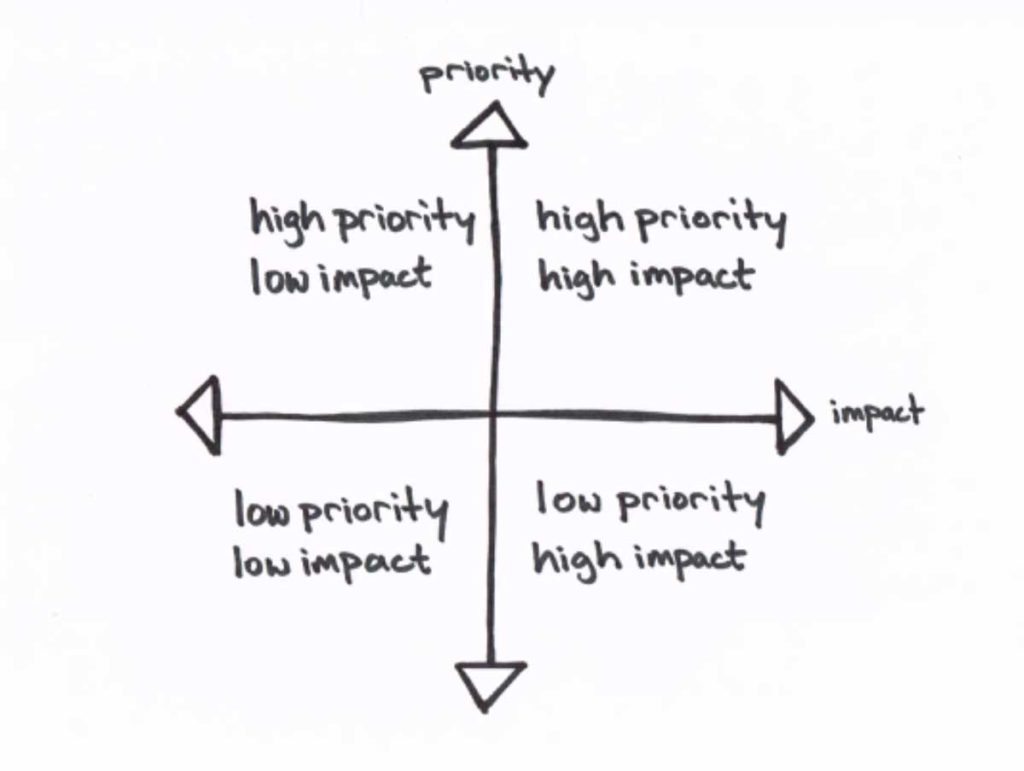
In my last article, Ideas are the easy part, we focused on empathizing with your users and customers, and defining a problem from their point of view. Too often we spend our time defining the problems from the company point of view and expect our customers to follow…and because of more choice and more information available, customers aren’t following like they used to.
I received some feedback from the last post, and most of the questions were around how to do ideation and brainstorming effectively. Let’s spend a few minutes diving deeper into that process. Last post we spent a little time on ideation and talked about the need to not brainstorm too quickly, before we’ve validated that the problem is a real problem for the user; one that they are willing to pay to have solved.
For ideation to be as productive as possible there needs to be some structure to the process to ensure we are progressing through to a small number of ideas worth testing. We use a simple framework that has us use divergent thinking, then after a short amount of time, converge on a few ideas that make sense. Once we’ve solidified on those, then diverge again to ensure we’ve covered all the possible scenarios.

There are a few key rules that should be followed when conducting a brainstorming session like this:
- Timebox each of the phases. Often 7-10 min per section is enough to get the majority of the ideas out and on paper.
- Work alone, together. Many times the loudest voice or the most senior person gets their ideas out first. Spend the first 5 min or so on your own ideas, then share them out as a group so there is less risk of the loudest voice having the best ideas
- Bring all the ideas together and vote on them. Use anonymous techniques to see which ideas resonate the most.
- Use ‘analogue’ tools. Paper, sharpies, white board markers are best for these sessions because they can be easily moved, thrown away or expanded upon. No computer skills required.
Once you’ve run through a few of these cycles of divergent and convergent thinking, start to prioritize those ideas into a Priority Matrix, which will help you decide what to prototype next. There’s an example of a Priority Matrix below:

There are many more that you could use, but this one is simple and easy to understand. Once you’ve prioritized a few of the ideas, begin the process of prototyping and testing with real users.
As those ideas get flushed out, put them into How Might We statements and write them on sticky notes. You can stick them up on a priority matrix like above and have a thoughtful and productive conversation about the priority of each statement. Without a sticky note that can be moved and a priority matrix to place it on, the conversations are often just hypothetical, and nothing changes. This simple tool helps make it tangible and allows us to move forward to the next step quickly.
Prototyping and Testing will be the topic of the final blog post of Design Thinking series. It will be a great way to bring together this process and start to apply it in your organization.

Craig Haney holds a Masters degree from University of Waterloo in Entrepreneurship and has been leading the charge for corporate innovation in Canada for almost 10 years. His work with Canadian Tire Innovations helped launch the corporate innovation program at Communitech. Currently Craig is the Vice President of Europro, a large real estate developer in Ontario.




















